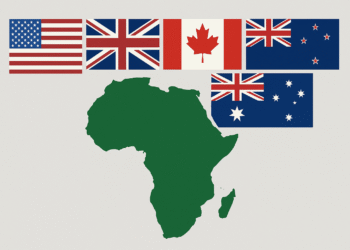In the vast expanse of the cosmos, a new kind of race is underway, not on earthly tracks, but in the boundless realm of space. Countries around the world are embarking on an audacious journey, vying for supremacy in the ultimate quest: to conquer the Moon.
Each nation brings its unique blend of dreams, ambitions, and technological prowess to this cosmic battleground, and the stakes have never been higher.
Leading the charge is the United States, a nation that etched its name in history with the Apollo missions.
Having successfully landed astronauts on the lunar surface six times during the late 1960s and early 1970s, the U.S. remains a key player. But they’re not stopping there.
The Artemis program, named after Apollo’s twin sister in Greek mythology, is poised to reignite the American flame on the Moon. Artemis III aims to bring astronauts back to lunar soil by 2025, fostering a legacy of exploration and discovery.
China, on the other hand, is determined to make its own mark in the celestial race. The Chang’e missions have witnessed remarkable triumphs, from lunar orbiters to rovers.
With Chang’e 4, China achieved a historic milestone by successfully landing a rover on the Moon’s far side, opening up uncharted territories for exploration. Now, they’re gearing up for Chang’e 6 and beyond, bolstering their reputation as a space superpower.
Not to be outshone, Russia continues to pursue lunar ambitions with unwavering resolve. The Luna program, dating back to the 1950s, saw a series of landers and orbiters aimed at deciphering the Moon’s mysteries.
While Russia’s recent Luna 25 mission faltered in its landing attempt, the nation remains steadfast in its commitment to lunar exploration. Plans for Luna 26 and 27 showcase their tenacity in the face of challenges.
Meanwhile, India’s Chandrayaan missions have captivated the world’s attention. After the triumph of Chandrayaan-1’s discovery of water molecules on the lunar surface, India experienced a minor setback with the Chandrayaan-2 lander’s crash landing.
Undeterred, they ahve now successfully landed the Chandrayaan-3 on the southpole side of the moon, demonstrating their resolve to conquer the Moon’s enigmatic allure.
As the race heats up, the European Space Agency (ESA) and Japan’s Aerospace Exploration Agency (JAXA) have joined forces to create a captivating alliance. With their Lunar Gateway project, the ESA and JAXA plan to establish a lunar outpost, facilitating research and serving as a steppingstone for future missions.
Beyond these frontrunners, an exciting array of contenders is emerging. Nations like Israel, UAE, and South Korea are all aiming for lunar glory, driven by visions of expanding humanity’s reach into the cosmos.
The lunar frontier has ignited a fervour of exploration and competition, with each nation’s journey intertwined with the mysteries of the Moon. As astronauts prepare to walk on its desolate plains once again, humanity’s insatiable curiosity propels us forward.
With plans laid out, missions charted, and lunar dreams on the horizon, the next chapter in the cosmic story is about to unfold. Will history repeat itself, or will new tales of lunar wonder and discovery emerge? Only time will tell, as the world watches in eager anticipation of the next giant leap for mankind.












